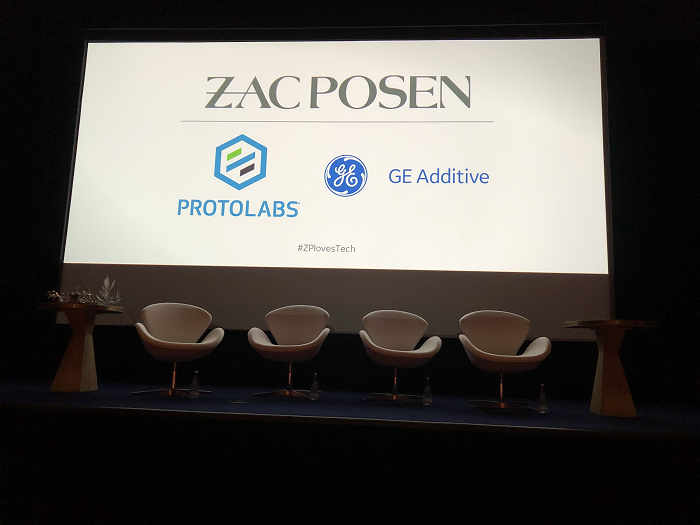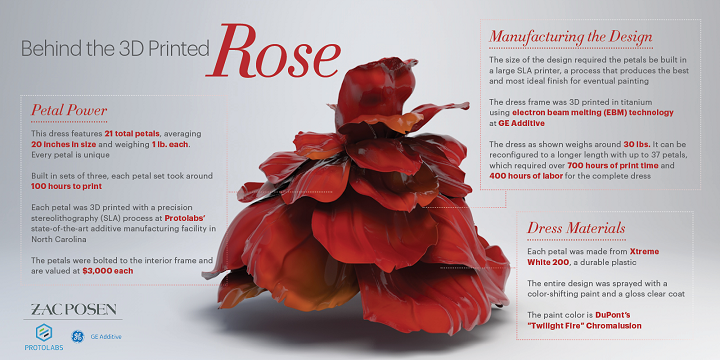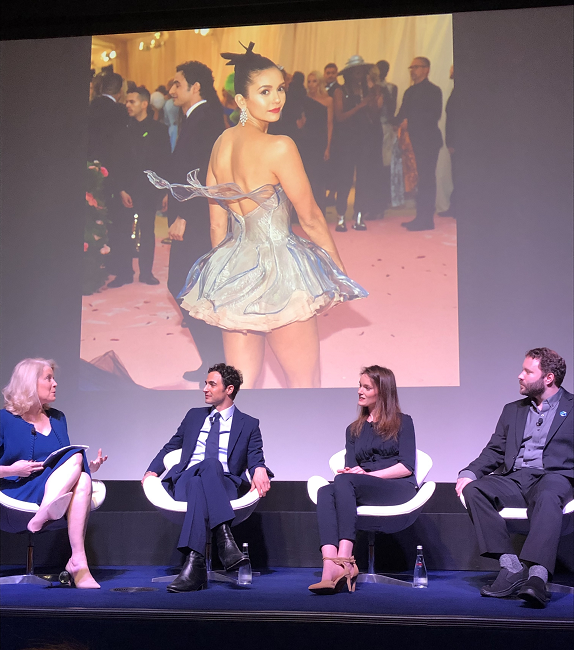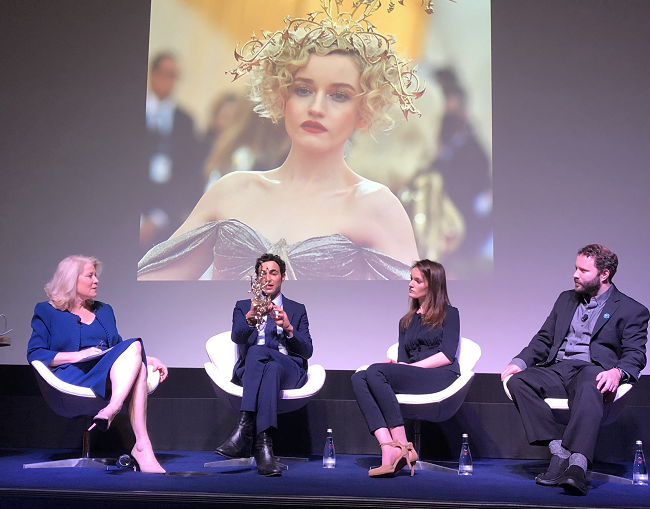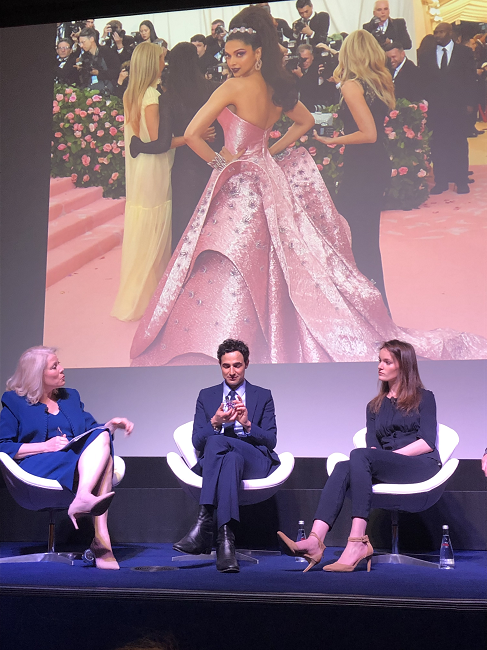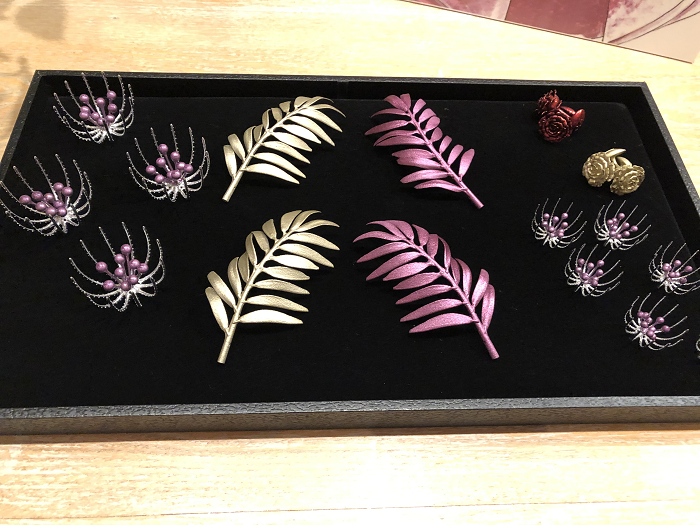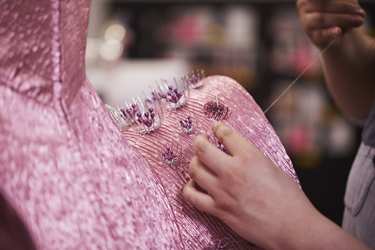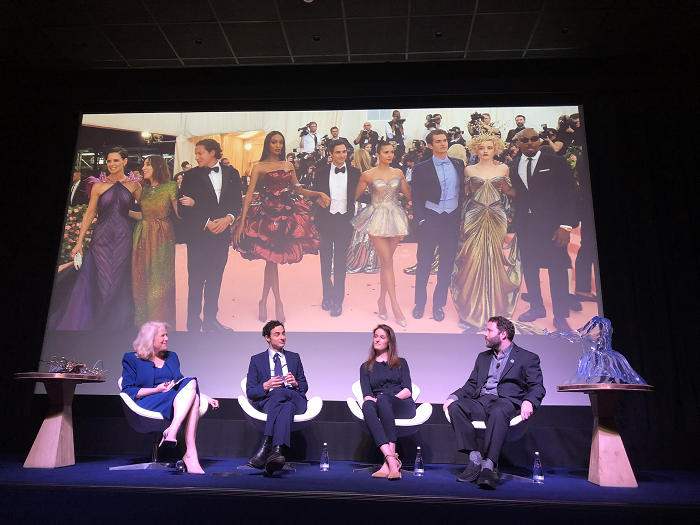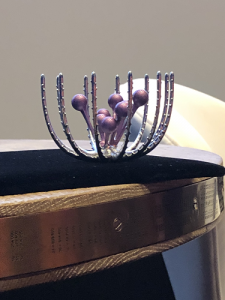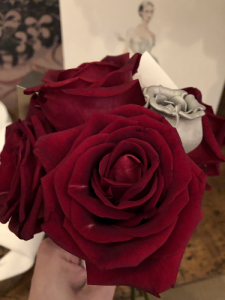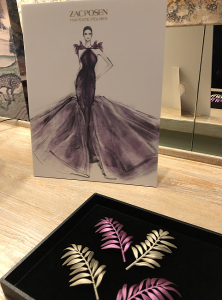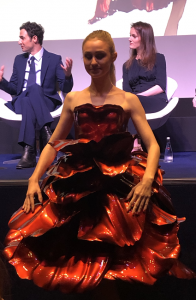Zac Posen, GE Additive, and Protolabs Partnered to Make 3D Printed High-Fashion Collection for 2019 Met Gala
The Metropolitan Museum of Art’s Costume Institute fundraiser event, better known as the Met Gala, has been referred to as the Oscars of the East Coast. This highly exclusive event heralds the arrival of the Costume Institute’s annual exhibition, and is a chance for fashion’s elite to strut their stuff. This year, famous designer Zac Posen, who launched his House of Z label at the age of 21, used 3D printing to go above and beyond on fashion’s biggest night. I was lucky enough to be invited to a luncheon in New York recently where Posen, and his collaborators GE Additive and Protolabs, discussed their teamwork over the last year to design and 3D print pieces for the 2019 Met Gala.
The Met Gala has a different theme each year, which the event itself, as well as the institute’s featured exhibition, are centered around, and guests dress to fit that theme. In 2016, the theme was Manus x Machina: Fashion in the Age of Technology, while last year was titled Heavenly Bodies: Fashion and the Catholic Imagination. This year, the chosen theme was Camp: Notes on Fashion, from writer Susan Sontag’s famous 1964 essay “Notes on Camp.”
CNN’s Aileen Kwun asked, “What does it mean to be “camp” in our age of political absurdity, and of social media-driven of excess and spectacle? The Metropolitan Museum of Art’s Costume Institute will attempt to address the historical context and significance of camp in fashion for its next blockbuster exhibition.”
In this case, we’re not talking about camping in tents and sitting around a fire pit, but more artifice and theatricality. Sontag herself defined camp as being a “love of the exaggerated,” in addition to a “sensibility of failed seriousness.”
Exaggerated is right when it comes to Posen’s 3D printed Met Gala collection, but in the best possible way. The designer and his 3D printing partners combined AM technology with CAD, stalwart fashion design techniques, and conceptual thinking to come up with several beautiful and unique pieces for the star-studded gala.
The event kicked off with a short video presentation before four people took the stage for a panel discussion: Linda Boff, GE’s chief marketing officer; Protolabs applications engineer Eric Utley; Sarah Watson, a design engineer with GE Additive’s design consulting team AddWorks; and Posen himself.
The eye-catching collection was inspired by nature, and more specifically the idea of freezing natural objects in motion. Posen has always been interested in the fluidity of fabrics, and has long wanted to experiment with the use of 3D printing in his designs.
“I wanted to work in 3D printing for, I don’t know, 20 years, and I tried to get my hand into it a few times, and – you know, this was the beginning, I didn’t know what the capabilities were,” Posen said during the panel. “So it was the beginning of this quest and collaboration.”
In a serendipitous moment, he actually had dinner with Boff the day after the 2018 Met Gala, and the collaboration was born when they realized that the 2019 event would be the perfect opportunity to mix 3D printing with high fashion.
“Then I did a trip to Pittsburgh and had a million and ten questions about plastic molecules, what’s possible, you name it,” Posen explained. “And then they kind of started to say, ‘Well, what do you want to start dreaming?’ And I talked about natural form, because I like to garden.
“Our greatest innovator and scientist is Mother Nature…that was really the start.”
Over the last year, the partners have been hard at work creating some absolutely stunning pieces. Posen and his creative team worked with the 3D printing experts and design engineers at GE Additive and Protolabs to explore multiple digital technologies – GE Additive brought its experience in additive design for multiple modalities, mechanical and industrial design, and creative and complex CAD modeling to the table, while Protolabs supplied its industry expertise from a wide range of manufacturing industries, materials, and processes.
Posen stated, “I dreamt the collection, GE Additive helped engineer it and Protolabs printed it.”
It took many, many hours of 3D printing to complete the collection for this year’s Met Gala – Posen and Boff said that the collaborators spoke with each other daily – and several of the garments were actually fitted to exact 3D recreations of the bodies of the people who would be wearing them; according to the Hollywood Reporter, Posen invited nine guests to the event, but only some of them rocked 3D printed pieces on the museum’s pink carpet.
 The great thing about 3D printing is the freedom it offers, which allows users to fabricate designs that would have been extremely difficult, or even impossible, to make using traditional forms of manufacturing. Additionally, there are many available custom finishing options for 3D printed pieces, in which Posen was extremely interested.
The great thing about 3D printing is the freedom it offers, which allows users to fabricate designs that would have been extremely difficult, or even impossible, to make using traditional forms of manufacturing. Additionally, there are many available custom finishing options for 3D printed pieces, in which Posen was extremely interested.
At one point early in the discussion I was looking down while writing notes, but my head quickly snapped back up when I heard multiple intakes of breath around me as a model walked into the auditorium wearing one of the stunning Met Gala pieces: the Rose Dress, worn at the previous night’s event by British supermodel Jourdan Dunn. The model walked slowly back and forth in front of the room so that everyone could get a good look at the amazing dress, which is based on the structure of a real rose.
The custom gown has 21 unique 3D printed petals, each one weighing 1 lb. and averaging 20″ in size, made out of Accura Xtreme White 200 durable plastic and printed on an SLA system. Primer and color-shifting automotive paint from DuPont were used to finish the petals, which are actually held in place on a modular 3D printed titanium cage that’s completely invisible from the outside of the dress. The cage was 3D printed on an Arcam EBM system at the GE Additive Technology Center (ATC) in Cincinnati, Ohio, while the gown itself was fabricated at Protolabs’ North Carolina facility; the 3D printing and finishing of the Rose Dress took over 1,100 hours.
According to Posen, the first petal prototype was a little too heavy, and the team had to determine how to reduce the weight by 20%, in addition to balancing stiffness with organic movement and adding a buttress underneath for extra support of the titanium frame. Watson explained that the dress design was very modular, and the cage itself is adjustable.“Our role as design consultants is to come in and have this immersive relationship with the customer,” Watson explained onstage. “So this was kind of an example of any other project we’d do with other industries, but slightly more, I think extreme, in just having us understand and start to work with each other. So Zac would give us feedback, like ‘It needs more energy and motion,’ and I was like, do you have a dimension for that?”
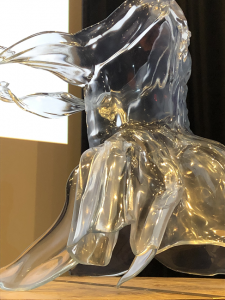 Everyone in the room laughed at this, particularly, I’d say, those of us from the manufacturing industry, and Posen continued her thought: “What do you mean by energy?”
Everyone in the room laughed at this, particularly, I’d say, those of us from the manufacturing industry, and Posen continued her thought: “What do you mean by energy?”
Watson continued, “But then we started to ask questions and we started to work together and kind of understand what that meant. And by the end, it really started to click.”
She said that the 3D printed clear bustier the team made for actress Nina Dobrev to wear was a good example of the company’s partnership with Posen really picking up steam.
“We worked really hard on the front of it, took a long time iterating back and forth to get a front that you really loved, and then on our last visit to New York, you said, ‘Let’s just add some twists at the back that look like they’re floating away in the wind,’ and I was like, ‘All right, I think I know exactly what you want.’ So we started to learn how to work together.”
The bustier – a clear dress 3D printed on an SLA printer – is the only piece of the Met Gala collection to be created at Protolabs’ German facility. Posen told us that it actually got held up on the way over to the US because the customs officials thought it was an art piece, to which Boff responded, “It is an art piece!”
 The interior of the 3D printed dress perfectly matches Dobrev’s 3D recreation, and comes in a 4-piece assembly for a truly custom fit. The first version was not as translucent as Posen hoped, so to get the glassy, liquid appearance of the final piece, Protolabs used Somos Watershed XC 11122 plastic, then finished it by wet hand sanding and spraying it with a clear coat.
The interior of the 3D printed dress perfectly matches Dobrev’s 3D recreation, and comes in a 4-piece assembly for a truly custom fit. The first version was not as translucent as Posen hoped, so to get the glassy, liquid appearance of the final piece, Protolabs used Somos Watershed XC 11122 plastic, then finished it by wet hand sanding and spraying it with a clear coat.
All told, the 3D printing and finishing of the bustier dress for Dobrev took over 200 hours.
“I think it’s really funny how this is fashion, but we were using a lot of the same plays in the playbook that Fortune 500 companies use to develop their products,” Utley said at one point during the discussion.
He said that the team made scale models and combined them with 3D CAD files to give Posen a better idea of what a piece would look like before printing even began. Watson noted that the same kind of problem-solving and engineering can be applied whether GE Additive and AddWorks are completing design projects for the aerospace industry or for the fashion world.
“When you’re trying to solve these problems of how do we print this, how do we design it for additive, how do we assemble it so that it assembles in a way that you really can’t tell how it was put together, those types of problems really apply across many different industries,” Watson said.
While the 3D printed Rose Dress and bustier are both beautiful and unlike anything I’ve ever seen before, the third of the Met Gala dresses we talked about is my favorite – a custom, purple Zac Posen gown, with a 3D printed palm leaf collar accessory, worn by actress (and Ohio native!) Katie Holmes.
While Posen did not have the neckpiece itself, which was 3D printed at the North Carolina Protolabs facility on an SLA system, he did bring the mold for it to the panel. He explained that he waited for the 3D printed neckpiece to fully evolve before he got to work on the draping of the beautiful dress, which he described as “1950s-quality” and like a “purple sunset.”
 The pearlescent palm leaves were 3D printed out of Accura 60 plastic and finished with pearlescent purple paint (Pantone 8104C). The piece drapes over the actress’s shoulders and attaches to the neckline of the tulle gown at her clavicle. It took over 56 hours to 3D print and finish the palm leaves for the striking neckpiece.
The pearlescent palm leaves were 3D printed out of Accura 60 plastic and finished with pearlescent purple paint (Pantone 8104C). The piece drapes over the actress’s shoulders and attaches to the neckline of the tulle gown at her clavicle. It took over 56 hours to 3D print and finish the palm leaves for the striking neckpiece.
Watson explained how Posen found a palm leaf he liked from his favorite craft store and sent it to GE Additive, who laser scanned it to make a 3D model. After the model was cleaned up and modified, the designers added a twist so that it would perfectly match and “float away over” her shoulder.
“That just demonstrates the power of this technology – you can start with this inspiration and modify it, add all the complexity you want, bring the vision to life in the 3D model, and then create it,” Watson said.
Moving on, Boff picked up an intricate 3D printed vine headpiece, flush with leaf and berry embellishments and finished with brass plating, and remarked that she was scared to even hold it. Posen told her not to worry, as the headpiece, worn by actress Julia Garner at the 2019 Met Gala, was made of nylon.
 Garner wore a custom Zac Posen ombré silver to gold lamé draped gown with the headpiece, which was printed as a single piece with binder jet technology on an HP Multi Jet Fusion system.
Garner wore a custom Zac Posen ombré silver to gold lamé draped gown with the headpiece, which was printed as a single piece with binder jet technology on an HP Multi Jet Fusion system.
The headpiece, which features a butterfly in the center, was the fastest piece of the collection to make: 3D printed with no supports, plated, and finished in just over 22 hours at Protolabs. It was a comparatively quick job, and the team commented that there is no way they could have made the headpiece through more conventional forms of manufacturing.
The final piece in the Met Gala collection was a custom Zac Posen metallic pink lurex jacquard gown, worn by Bollywood icon Deepika Padukone, that included delicate 3D printed embroidery which Posen described as “a little sci-fi” and was inspired by underwater creatures like sea urchins and anemones.
The 408 pink and silver embroidery pieces, 3D printed on an SLA system at Protolabs out of Accura 5530 plastic, were all different sizes, and were actually sewn on to the outside of the gown. But before that happened, the pieces were vacuum metalized and center painted with Pantone 8081 C; the 3D printing and finishing work on the embroideries took over 160 hours.
At the Met Gala, Posen and two of his other guests also wore 3D printed accessories – the designer added 3D printed lapel brooches to his ensemble that were essentially a scaled down version of the large palm leaves that made up the 3D printed neckpiece. 3D printed out of high resolution Accura 5530 material on both SLA and MJF machines, these brooches were finished in pearlescent purple and gold paint.
Additionally, Vito Schnabel and actor Andrew Garfield both wore 3D printed cuff links that integrated Posen’s logo and represented a scaled down version of the Rose Dress. The cuff links were 3D printed out of MicroFine Green material on an SLA 3D printer and dramatically finished with color-changing red and gold paint.
The four panelists then took some questions from the group, and one of the first people to get the mic wanted to know what had surprised each person about the collaboration. Posen said that all the partners began to learn one another’s vernacular during the process, while Utley stated that the evolution of the project was surprising and Watson continued, noting that “Zac wanted to go bigger and bolder than other 3D printed fashion.”
“It can be hard to conceptualize something like this,” Watson continued. “But this is a great demonstration of what the technology can really do.”
 Utley stated that the fashion collaboration took advantage of two important things 3D printing can offer – lightweight designs and mass customization.
Utley stated that the fashion collaboration took advantage of two important things 3D printing can offer – lightweight designs and mass customization.
“Let’s give credit where credit is due – aerospace and medical get a lot of noise for adapting 3D printing, but like Zac said, he was using 3D printing ten-plus years ago, and it [fashion] is well-suited for those aspects,” Utley said.
Posen said that he was “very proud” of the partnership with GE Additive and Protolabs, and that he was able to work with the two companies to “bring motion and life to technology.”
“Had we not had a partner in Zac Posen, who literally thinks in 3D, this never would have happened,” Boff said about the Met Gala collection. “It was a project of tremendous joy and passion, and to see it come to life on the steps of the Met is a once in a lifetime experience. It was just incredible.”
When asked what she had learned from working with Posen, Watson stated that AddWorks and GE Additive will typically use CAD software for more industrial applications, but that they had needed to shift and become more familiar with using other software, such as Rhino and Blender, in addition to photogrammetry, for this particular project. Speaking of software, Posen was asked if the collaboration would change how he designed clothes from now on.
Another person asked the question that is always on my mind when it comes to 3D printed clothing – what does the path look like to consumer 3D printed fashion? Many designers are working to use the technology to make wearable clothing that’s less of a novelty and more for everyday use, but that can sometimes be easier said than done. But Posen had a great answer, and stated that the next big challenge was dealing with closures for clothing.“I would love a software that will let you model fabric and draping,” he answered. “And we’re getting there!”
“What’s the new zipper?” he asked.
As most of us aren’t lucky enough to have an army of people helping to dress us, or own clothing made to perfectly fit our bodies, this is a smart question to be asking. Posen also said that we have a long way to go in replicating fabric, and that further advancements in both scale and material are still to come in the future. Watson also chimed in and said that 3D printing could easily be used to make molds in the fashion industry.
Boff thanked the teams from GE Additive and Protolabs for their “remarkable” patience, flexibility, and commitment, and said that the project shows how 3D printing in any industry, fashion or otherwise, is really about “working your way back from a problem.”
“And in this case, that problem was dressing five gorgeous women,” Boff said as everyone in the room laughed. “But it is something that applies to so many different industries, and I just think for all of us, this can sound a bit fantastical, but 3D printing is real.”
3D printing is still growing faster than any other type of manufacturing technology at the moment, and the fashion industry, as well as other applications in consumer goods, can really use the technology to its advantage to help the market evolve. Posen has said that the 3D printed Met Gala collection is an example of fashion as an art form, and not the standard in terms of mass adoption. But, while we still can’t walk into Macy’s and purchase our own 3D printed Rose Dress just yet, I think that day is coming.
Check out some more pictures from my trip to New York below:
- 3D printed embroidery
- Press pack with metal 3D printed rose
Discuss this story and other 3D printing topics at 3DPrintBoard.com or share your thoughts in the Facebook comments below.
[Images: Sarah Saunders, unless otherwise noted]
Subscribe to Our Email Newsletter
Stay up-to-date on all the latest news from the 3D printing industry and receive information and offers from third party vendors.
You May Also Like
Gorilla Sports GE’s First 3D Printed Titanium Cast
How do you help a gorilla with a broken arm? Sounds like the start of a bad joke a zookeeper might tell, but it’s an actual dilemma recently faced by...
Nylon 3D Printed Parts Made More Functional with Coatings & Colors
Parts 3D printed from polyamide (PA, Nylon) 12 using powder bed fusion (PBF) are a mainstay in the additive manufacturing (AM) industry. While post-finishing processes have improved the porosity of...
$25M to Back Sintavia’s Largest Expansion of Metal 3D Printing Capacity Since 2019
Sintavia, the digital manufacturing company specializing in mission-critical parts for strategic sectors, announced a $25 million investment to increase its production capacity, the largest expansion to its operations since 2019....
Velo3D Initiates Public Offering in a Bid to Strengthen Financial Foundations and Drive Future Growth
Velo3D (NYSE: VLD) has been among a number of publicly traded 3D printing firms that have attempted to weather the current macroeconomic climate. After posting a challenging financial report for 2023,...


